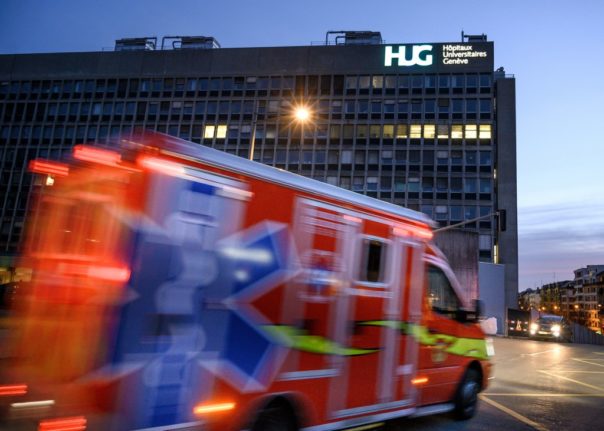Obviously, being driven to a hospital in an ambulance is not anyone’s idea of a fun ride, but there may be situations when this mode of transport could become necessary. Who pays for this service depends on several factors.
But first…this is what you should know about calling an ambulance:
If you or someone around you has a real medical emergency (see below), dial 144, wherever in Switzerland you may be.
A dispatcher will ask you what the nature of your emergency is, as well as other follow-up questions to determine if you need an ambulance in the first place.
Based on the linguistic region you are in, the dispatcher will speak German, French or Italian; they may also speak some English, but that is not guaranteed.
Once in an ambulance, you will be taken to a nearest hospital, although, depending on the seriousness of your symptoms, you may be given first aid on the way.
This a pretty standard procedure in most countries, not just in Switzerland.
How much does an ambulance call-out cost and who pays?
The cost of this service depends on where you live, ranging from about 900 to 2,100 francs, according to consumer site Comparis.ch
The compulsory health insurance (KVG in German and LaMal in French and Italian) covers half of this amount, but only up to 500 francs a year if the ambulance is called when there is no immediate danger to life but you are nevertheless unable to get to a hospital by other means of transportation, such as a car or bus.
It is not clear what urgent medical conditions would enable you to take public transportation, but that’s what the law says.
It is more reasonable to assume that in such a case someone will drive you to a hospital, but if that is not feasible either and you feel you need immediate medical help, then an ambulance may be your only option.
However, if ambulance is required for life-threatening conditions, KVG / LaMal will cover up to 5,000 francs of the cost of emergency transportation.
READ MORE: What is not covered by Switzerland’s compulsory health insurance
What is categorised as a ‘life-threatening condition’?
This is a true medical emergency, which, if not treated quickly and immediately, puts your life at risk.
This includes (but is not limited to) heart attacks and strokes, head trauma, severe respiratory distress, severe bleeding, serious injuries, and other conditions where any delay in treatment can put your life or health at risk.
Is there a coverage for ambulance rescue costs?
Some supplemental insurance policies guarantee a higher, or even unlimited, cover of all transportation and rescue costs.
Supplemental policies offer other advantages as well by paying for treatments and services not routinely covered by the basic insurance.
However, depending on your medical history and current health, it may be expensive or difficult to obtain.
While insurance companies must offer the same obligatory KVG / LaMal coverage to everyone, regardless of health status, carriers can deny supplemental benefits to people deemed ‘at risk’.
This includes those with pre-existing medical conditions or history of repeated treatments.
However, if you are relatively healthy and have no chronic illnesses necessitating frequent treatments, you will not have a problem getting supplemental coverage.
More information can be found here:
Should you buy supplemental health insurance in Switzerland?



 Please whitelist us to continue reading.
Please whitelist us to continue reading.
Member comments